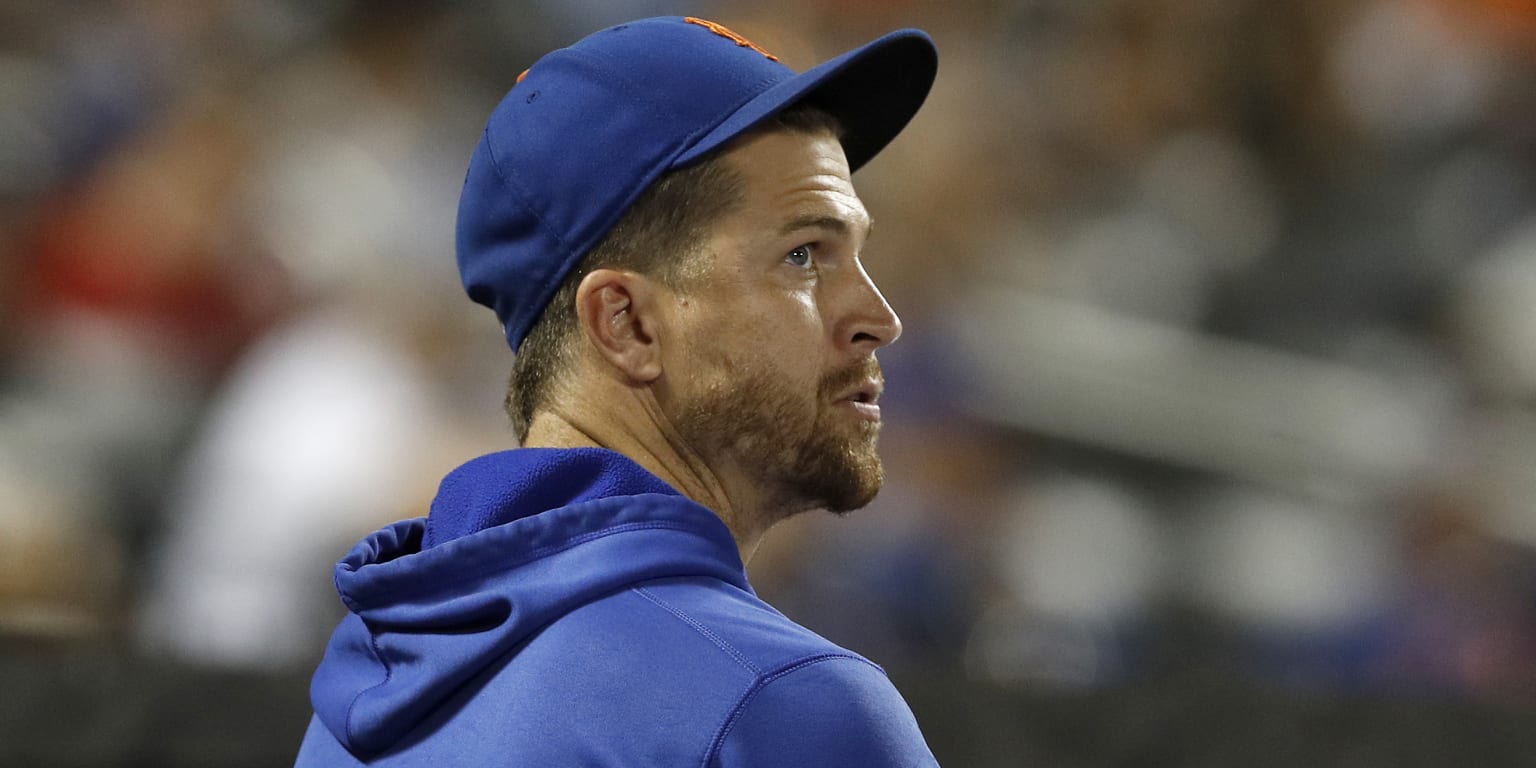
NEW YORK — When Jacob deGrom walked off the mound on the afternoon of July 7, there was little reason to suspect he would not pitch again that season. Privately, deGrom harbored some concern about his right forearm, which felt unusually fatigued. But even deGrom figured he would rest over the All-Star break and resume his historic campaign in the second half.
Four months later, deGrom has yet to return to the mound. As the Mets fell from first place to third in the National League East, the sum of his work entailed bullpen sessions and games of catch.
“You just see how it affects everybody else,” deGrom said in a telephone interview last week, offering his first extended comments since July. “It’s like, ‘Man, I should be out there playing. I should be out there taking the ball every fifth day.’ So it’s just frustrating. I was definitely frustrated. It was one of those things that I just couldn’t get rid of it.”
The short-term future of the Mets depends in large part upon deGrom’s right arm, which produced a 1.08 ERA and 146 strikeouts in 92 innings before his season-ending injury. Set to turn 34 next June, deGrom remains under team control for at least one more season, after which he can opt out of his contract — a prospect that seemed inevitable a year ago but has since become less certain.
The team also needs deGrom at his best if it wants to compete for a playoff spot as soon as next season.
“I have to take a lot of responsibility for [the Mets] falling short,” deGrom said. “I’m not running out there every fifth day, and I feel like I can help the team win. So going down and not being able to go out there and pitch, it’s definitely a letdown for me. But it’s also a letdown for the team. So I do take a lot of responsibility for that.”
Over the past two seasons, deGrom has missed time due to neck, lat, back, shoulder, forearm and elbow issues, none of them proving overly serious until his final start of the first half against the Brewers. In the seventh inning of that game, deGrom experienced an unusual bit of soreness in his right forearm. At first, he thought little of it. But when the Mets resumed their season a week later in Pittsburgh, deGrom was still feeling discomfort. The club scheduled him for what became the first of several MRIs.
Although the MRI revealed nothing more than a mild forearm strain, deGrom’s arm discomfort spread from his forearm to elbow in the ensuing days. He believes now that the positioning of his arm in that MRI tube — he laid on his stomach with his elbow raised above him for nearly an hour — exacerbated the issue.
“I honestly think that’s what aggravated it,” he said.
Two weeks after the test in Pittsburgh, deGrom underwent a follow-up MRI in New York that revealed inflammation around his UCL — what Mets team president Sandy Alderson later referred to as a partial ligament tear. Once deGrom’s inflammation subsided two weeks later, three orthopedists confirmed that his ligament was completely intact: team physician Dr. David Altchek, as well as third-party orthopedists Dr. Neal ElAttrache and Dr. Keith Meister.
Two more weeks passed before yet another test — deGrom’s fourth MRI in less than two months — came back clean enough for him to resume throwing. He did so in late August, but he did not have enough time to return to the mound without rushing. Finally, when the Mets fell out of postseason contention, deGrom agreed to shut down for the year.
“If we did make the playoffs, it was definitely like, ‘Hey, I’m pitching in the playoffs,’” deGrom said. “I think once we saw we were kind of out of it, it was like, ‘OK, there’s no reason to keep pushing this. Let’s just shut it down, rest and be healthy for next year.”
That is what deGrom is doing now. At home in DeLand, Fla., deGrom made plans to begin his offseason catch routine on Monday, as he does every Nov. 1. The two-time NL Cy Young Award winner didn’t feel any abnormal soreness during bullpen sessions in September, even after he cranked his fastball up to 98 mph — all positive signs for a bounce-back 2022 season. He hasn’t spoken to Steve Cohen recently except for a brief conversation in which the Mets owner told deGrom to “get healthy and … be ready for next year.”
As for his opt-out following next season, deGrom said it’s “just something we’ll have to see how next year goes.” He called his injury a motivating factor to prove he can still make 30-plus starts, which would paint both his contract decision and his remaining career arc in a different light.
“In this game, the main goal is to stay healthy, and I wasn’t able to do that this year,” deGrom said. “I’ll compete as long as I can. You never know how long you can play this game, [so] enjoy it and go out there and just give it your best while you’re able to. Nobody knows. Maybe I’ll play till I’m 40. Maybe I’ll play ’till I’m 50. Who knows?”
